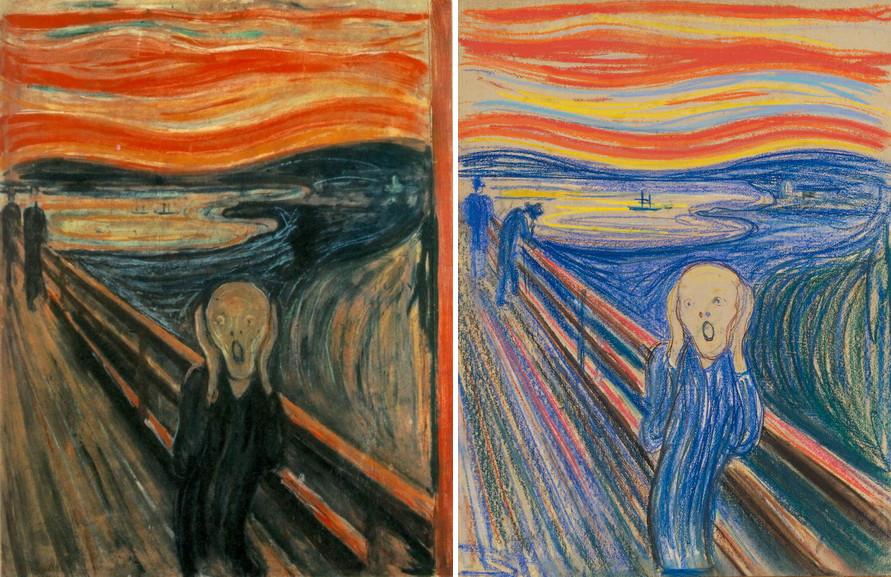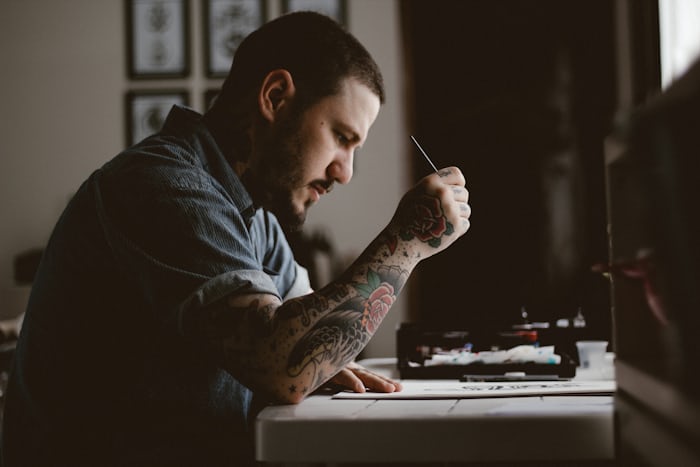As a visual artist, you may not feel that it’s necessary to write artist statements. However, writing an artist statement is a crucial aspect of being an artist to enhance professional opportunities to build a successful art career. Artists’ statements are more than just artists talking about themselves; they provide valuable insight and essential context to specific pieces of artwork and potentially the entire body of works. From Arts organizations that provide grants and fellowship positions or jury’s review of portfolio submissions to collectors and dealers buying art, require artist statements to learn more about the artist and their art.
When writing your artist statement, start with a mind map to visualize the goal in mind, consider your audience, use active voice, and avoid highly academic language that may be intimidating for some audiences. Interview yourself. What questions would the art world ask to better understand your creative methods and artistic mission? Study statements examples and use artist statement templates to help you get started.
Whether it’s the old masters’ works, influential women artists, or political activist artists and their movements, describe those inspirations and their work that has impacted yours. What are your cultural backgrounds, personal, and/or art historical influences? Is there an iconic artist you admire the most or fellow artists creating art using the same medium, methods, and techniques as you do?
Here are some short artist statements that are concise yet compelling and making an excellent job of providing insight into their art.

Edvard Munch, The Scream (1893)
“I was walking along a path with two friends – the sun was setting – suddenly the sky turned blood red – I paused, feeling exhausted, and leaned on the fence – there were blood and tongues of fire above the blue-black fjord and the city – my friends walked on, and I stood there trembling with anxiety – and I sensed an infinite scream passing through nature.”
Pablo Picasso
“I have never made trials or experiments. Whenever I had something to say, I have said it in the manner in which it needed to be said…I can hardly understand the importance given to the word “research” in connection with modern painting. In my opinion, to search means nothing in painting. To find is the thing.”
Jackson Pollock, Convergence (1952)
“I want to express my feelings rather than illustrate them. It doesn’t matter how the paint is put on, as long as something is said. On the floor, I am more at ease. I feel nearer, more part of the painting, since this way I can walk around it, work from the four sides and literally be in the painting. When I’m painting, I’m not aware of what I’m doing. It’s only after a get-acquainted period that I see what I’ve been about. I’ve no fears about making changes for the painting has a life of its own.”
Titian, The Venus of Urbino (1538)
“Woman, goddess, subject, object, and signifier: Venus activates both the Utopian and Dystopian spaces of the Venetian Palazzo. By inducing an affirmative valence of feminine/objective lucidity Venus poses a question: has our tendency to privatize desire further affirmed or disenfranchised her archetypal significance?”
Jean-Honore Fragonard, The Bathers (1765)
“By disrupting the implied heteronormative discourse of antediluvian mythology, my paintings imply a personal mythopoeic narrative that both transcends and embodies the male gaze. By investigating the callipygian forms of a complex homosocial nexus in an anti-Lacanian context I depict a multitude of redundant, overlapping and coded tasks and roles.”
Michelangelo Buonarroti, The Rebellious Slave (1513)
“The pre-homoeroticized body forms both my field of action and the basis of my conceptual taxonomy. My sculptures explore both the flux of transfixable signifiers and their complimentary anecdotal formations. My choice of Carrara marble as a medium creates a dialectic between proto-Classical conceptions of idealized form and later Humanistic naturalism. Each figure’s physical struggle is simultaneously inoperative and adjectival.”
Duane Keiser
“My subject matter tends to be those fragmentary passages that reside within the mundane – the in-between spaces of our lives that we see but often do not notice. For me, these paintings are about the pleasure of seeing; of being cognizant of the world around me and pushing to find an alchemy between the paint, my subject and the moment. I view each piece as being part of a single, ongoing work.”

Image credit: Sara Krulwich/The New York Times / Image source: nytimes.com
Judy Chicago
“Because we are denied knowledge of our history, we are deprived of standing upon each other’s shoulders and building upon each other’s hard-earned accomplishments. Instead, we are condemned to repeat what others have done before us and thus we continually reinvent the wheel. The goal of ‘The Dinner Party’ is to break this cycle.”
Gustav Klimt
“I have never painted a self-portrait. I am less interested in myself as a subject for a painting than I am in other people, above all women… There is nothing special about me. I am a painter who paints day after day from morning to night… Whoever wants to know something about me… ought to look carefully at my pictures.”
Wassily Kandinsky
“I let myself go. I thought little of the houses and trees, but applied colour stripes and spots to the canvas… Within me sounded the memory of early evening in Moscow – before my eyes were the strong, colour-saturated scale of the Munich light and atmosphere, which thundered deeply in the shadows.”
Louise Bourgeois, Spider (1996)
“I’ve drawn my whole life. My parents were in the tapestry restoration business, and as a young girl, I would draw in the missing parts of the tapestry that needed to be re-woven. My ability to draw made me indispensable to my parents. I came from a family of repairers. The spider is a repairer. If you bash into the web of a spider, she doesn’t get mad. She weaves and repairs it. ‘The Spider’ is an ode to my mother. She was my best friend. Like a spider, my mother was a weaver. . . Like spiders, my mother was very clever. Spiders are friendly presences that eat mosquitoes. So, spiders are helpful and protective, just like my mother.”
Alice Aycock, Cyclone Twist (2014)
“I tried to visualize the movement of wind energy as it flowed up and down the Avenue creating random whirlpools, touching down here and there and sometimes forming dynamic three-dimensional massing of forms. One of the works, in particular, references the expressive quality of wind through drapery and the chaotic beauty of fluid/flow dynamics. As much as the sculptures are obviously placed on the mall, I wanted the work to have a random, haphazard quality – in some cases, piling up on itself, in others spinning off into the air.”
Grandma Moses, Morning Day on the Farm (1951)
“I paint from the top down. From the sky, then the mountains, then the hills, then the houses, then the cattle, and then the people. I look out the window sometimes to seek the color of the shadows and the different greens in the trees, but when I get ready to paint I just close my eyes and imagine a scene. I’ll get an inspiration and start painting; then I’ll forget everything, everything except how things used to be and how to paint it so people will know how we used to live.”

Conclusion
Remember that an artist statement is not an artist biography. If you are uncomfortable to be both an artist and writer for your art, seek help from art experts, mentors, and talented writers who can provide writing tips for artists statements and statement templates.
Look for sample artist statements to help you guide and get started. Find an artist statement example that resonates with you and use that as inspiration when structuring your statement. When you write your artist statement, think about what you can say uniquely about your artwork that will urge a critic, dealer, art organization, or art collector to learn more about you and compel to pay a studio visit to see your work.



![[Left] Kusama with her piece Dots Obsession, 2012, via AWARE, [Right] Yayoi Kusama (Courtesy Whitney Museum of American Art) | Source: thecollector.com](https://www.artdex.com/wp-content/uploads/2024/04/Left-Kusama-with-her-piece-Dots-Obsession-2012-via-AWARE-Right-Yayoi-Kusama-Courtesy-Whitney-Museum-of-American-Art-Source-thecollector.com--300x172.png)



